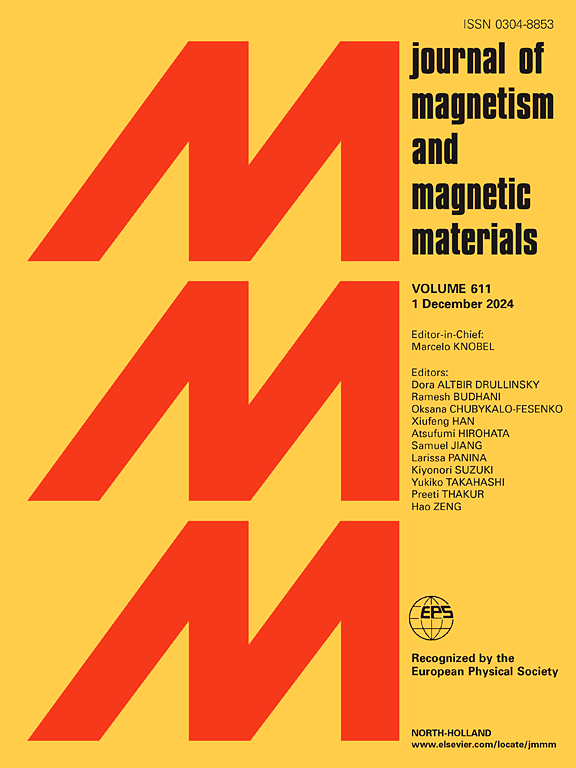生物医学应用钴铁氧体纳米粒子的设计、合成、表征和生物学评价
IF 2.5
3区 材料科学
Q3 MATERIALS SCIENCE, MULTIDISCIPLINARY
引用次数: 0
摘要
钴铁氧体纳米粒子(CF NPs)由于其独特的磁性和生物相容性在生物医学领域的应用越来越广泛。在本研究中,通过共沉淀法合成了CF NPs,在存在和不存在油酸(OA)作为表面活性剂的情况下。采用Plackett-Burman设计研究了不同反应条件对裸膜和包被oa的CF NPs粒径分布的影响。采用TEM、XRD、FTIR、TGA、UV-Vis和VSM等手段对具有代表性的裸cfnp和oa包覆cfnp样品的形貌、组成、热稳定性、光学和磁性进行了表征。较小尺寸的裸CF NPs的饱和磁化值最高(~ 44 emu/g)。MTT分析结果表明,在测试浓度(1、10和100 μ g/mL)下,所有测试样品均未显示出显著的细胞毒性,除了裸露的CF NPs,在100 μ g/mL浓度下暴露72小时后,A549细胞的活力降低至约50%。在细胞培养基中孵育48小时后,使用SDS-PAGE分析CF NPs表面结合的蛋白质,发现牛血清白蛋白、载脂蛋白a - i和纤维连接蛋白是样品中最丰富的蛋白质。总的来说,oa涂层略微提高了胶体稳定性,降低了细胞毒性,但没有显著影响磁性或蛋白质结合特性。本文章由计算机程序翻译,如有差异,请以英文原文为准。
Design, synthesis, characterization and biological evaluation of cobalt-ferrite nanoparticles for biomedical applications
Cobalt-Ferrite nanoparticles (CF NPs) are increasingly used in biomedical applications due to their unique magnetic properties and biocompatibility. In this study, CF NPs were synthesized via co-precipitation, both in the presence and absence of oleic acid (OA) as a surfactant. Plackett-Burman Design was employed to study the influence of reaction conditions on the particle size distribution of bare and OA-coated CF NPs. Representative bare and OA-coated CF NP samples were characterized for morphology, composition, thermal stability, and optical and magnetic properties using TEM, XRD, FTIR, TGA, UV–Vis, and VSM. The highest saturation magnetization value (∼44 emu/g) was observed for bare CF NPs of smaller sizes. MTT assay results indicated that none of the tested samples showed significant cytotoxicity at the concentrations tested (1, 10, and 100 µg/mL), except for the bare CF NPs, which reduced viability of A549 cells to approximately 50 % following 72-hour exposure at 100 µg/mL. Following incubation in a cell culture medium for 48 h, proteins bound to the surface of CF NPs were analyzed using SDS-PAGE, revealing bovine serum albumin, apolipoprotein A-I and fibronectin as the most abundant proteins across samples. Overall, OA-coating slightly improved colloidal stability and reduced cytotoxicity, without significantly compromising the magnetic or protein-binding properties.
求助全文
通过发布文献求助,成功后即可免费获取论文全文。
去求助
来源期刊

Journal of Magnetism and Magnetic Materials
物理-材料科学:综合
CiteScore
5.30
自引率
11.10%
发文量
1149
审稿时长
59 days
期刊介绍:
The Journal of Magnetism and Magnetic Materials provides an important forum for the disclosure and discussion of original contributions covering the whole spectrum of topics, from basic magnetism to the technology and applications of magnetic materials. The journal encourages greater interaction between the basic and applied sub-disciplines of magnetism with comprehensive review articles, in addition to full-length contributions. In addition, other categories of contributions are welcome, including Critical Focused issues, Current Perspectives and Outreach to the General Public.
Main Categories:
Full-length articles:
Technically original research documents that report results of value to the communities that comprise the journal audience. The link between chemical, structural and microstructural properties on the one hand and magnetic properties on the other hand are encouraged.
In addition to general topics covering all areas of magnetism and magnetic materials, the full-length articles also include three sub-sections, focusing on Nanomagnetism, Spintronics and Applications.
The sub-section on Nanomagnetism contains articles on magnetic nanoparticles, nanowires, thin films, 2D materials and other nanoscale magnetic materials and their applications.
The sub-section on Spintronics contains articles on magnetoresistance, magnetoimpedance, magneto-optical phenomena, Micro-Electro-Mechanical Systems (MEMS), and other topics related to spin current control and magneto-transport phenomena. The sub-section on Applications display papers that focus on applications of magnetic materials. The applications need to show a connection to magnetism.
Review articles:
Review articles organize, clarify, and summarize existing major works in the areas covered by the Journal and provide comprehensive citations to the full spectrum of relevant literature.
 求助内容:
求助内容: 应助结果提醒方式:
应助结果提醒方式:


